All You Need to Know About Bagasse Packaging
In the past few decades, traditional plastics and Styrofoam have been used to make packaging materials in various industries, resulting in large-scale environmental pollution. These pollutions pose a threat to wildlife, ecosystems, and human health, so the use of sustainable packaging has become an inevitable trend. This is the topic we are going to discuss today: bagasse packaging.
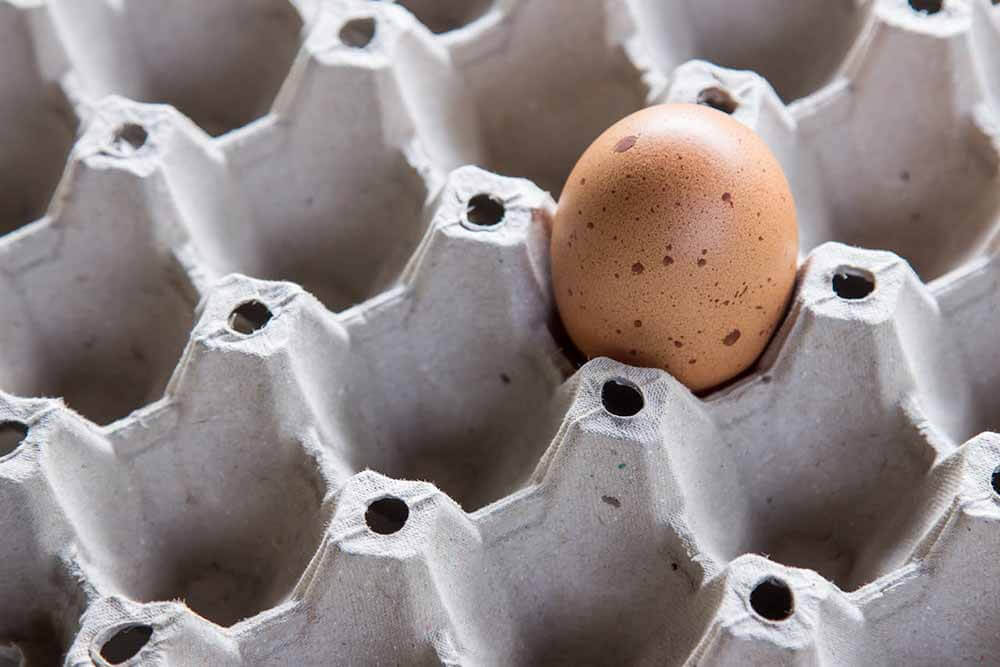
What is Bagasse Packaging?
Bagasse packaging, also known as sugarcane fiber packaging, is a biodegradable and compostable packing material made from bagasse, which is a fibrous residue left behind after sugarcane or other plant materials have been crushed to extract their juice.
What Contains in the Dry Bagasse?
Dry bagasse contains 45%-55% Cellulose, 20%-25% Hemicellulose, 18%-24% lignin, 1%-4% ash, and <1% wax, this makes the natural material to be a strong and eco-friendly solution for packaging materials. View more details about bagasse here.
How to Extract Sugarcane Fiber from Bagasse?
Depending on different techniques and requests, there are many ways to extract sugarcane fiber from bagasse, here is the step of how we extract the fiber.
- After harvesting sugar cane, extract the juice from the sugarcane, which is used to produce sugar, ethanol, or other sugarcane juice-related products.
- Collect the bagasse after juice extraction.
- Place the bagasse in an ultrasonic cleaner and use ultrasonic vibration to clean and remove impurities from the bagasse.
- Place the cleaned bagasse into a high-temperature oven at a temperature of 50-60°C for 20-40 minutes to dry the bagasse.
- Spray the dilute nitric acid solution into the dried bagasse. After air-drying again, soak the bagasse sprayed with dilute nitric acid solution into the dilute nitric acid solution and stir.
- Put the sugarcane bagasse processed in the previous step into deionized water and soak it until the pH value of the washing liquid is within the range of 6.0-7.0.
- Squeeze and cut the bagasse, each section is 1-3cm, and dry it again after cutting.
- Soak the cut sugarcane bagasse in a mixed solution of naoh and anhydrous sodium sulfite, and stir it every 0.2-0.4 hours to obtain a mixture.
After the mixture is suction-filtered, it is repeatedly soaked and washed with distilled water until the pH of the washing liquid is within the range of 7.0-8.0. It is suction-filtered again, and the obtained filter residue is moved to a tray and dried in an oven at 90°C for 5 hours to obtain sugarcane fiber.
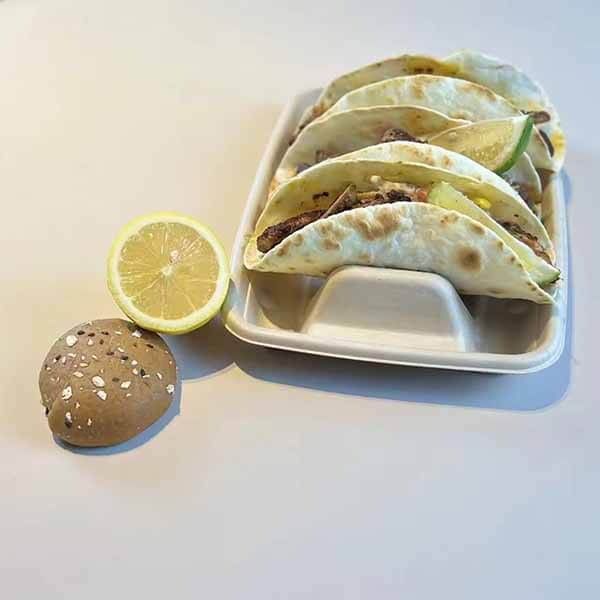
How to Make Bagasse Packaging?
Bagasse can be a versatile material to make different types of packaging. Although various packages have different appearances, their processing methods are roughly the same.
We use the pulp molding technique, sugarcane fiber is mixed with other additives, and pressure and heat are applied in the mold to make various paper products, such as packaging boxes, tableware, etc. The pulp molding production process is divided into five major processes: pulp making, forming, drying, trimming, and post-processing.
Pulp Making
Pour the bagasse into a pulp tank or pulp barrel, mix it with clean water, and use a beater to form a slurry by controlling a certain pH value and concentration.
Forming
The prepared slurry is transferred to the forming mold through the slurry suction system to form a wet mold base. At this time, the mold base has no hardness and contains a lot of moisture, but the basic prototype of the product has been formed.
Drying
The wet mold base formed on the forming mold evaporates 98% of the water through electric heating during the heat setting process, so that the product has better toughness and strength. The time for the water to evaporate is the demoulding time. According to the product accuracy and smoothness According to the requirements, the demoulding time generally ranges from 120s to 180s.
Trimming
The product formed by heat molding still has some rough edges, and the edge-trimming process makes the finished product more refined. Trimming is generally divided into flat trimming and rim trimming. The flat trimming leaves a slight edge, while rim trimming can directly cut all the edges. Different trimming methods can be selected according to the needs of the product.
Post-Processing
If the customer needs to print a Logo or pattern on the packaging, also need to follow up and request customized printing.
The Advantages of Bagasse Packaging
Eco-Friendly: Bagasse is a renewable resource that is a great alternative to plastic or Styrofoam.
Biodegradable: Bagasse packaging can decompose naturally, this material can reduce the burden on landfills.
Compostable: Bagasse can be composted with organic waste and returns nutrients to the soil.
Sturdy: Bagasse containers are used to hold various foods without any leakage and deform, which means this material is sturdy enough to make the packaging material.
Allergen-Free and Non-Toxic: Sugarcane fiber packaging is food-grade and naturally allergen-free and non-toxic, making it an ideal option for individuals with allergies or sensitivities.
Temperature Adaptability: Packing material made from bagasse material can withstand temperatures from -20℃ to 120℃.
Customizable: Bagasse packaging can be molded into various shapes and sizes to accommodate different food items and presentation needs.
Microwave-Safe: You can reheat your food in the bagasse food container in the microwave oven directly.
Branding Opportunities: Bagasse packaging can be easily customized with your logo, patterns, messages, and any other designs.
Protection Performance: Besides food containers, bagasse can be made into the outer packaging of various products, this material can improve shock absorption during transportation and handling.
The Application of Bagasse Packaging
Due to the versatility of bagasse packaging, it can be used in various industries, such as takeaways, desserts, snacks, beverages, daily necessities, cosmetics, and electronic products. Custom molded fiber packaging today from Eco March!
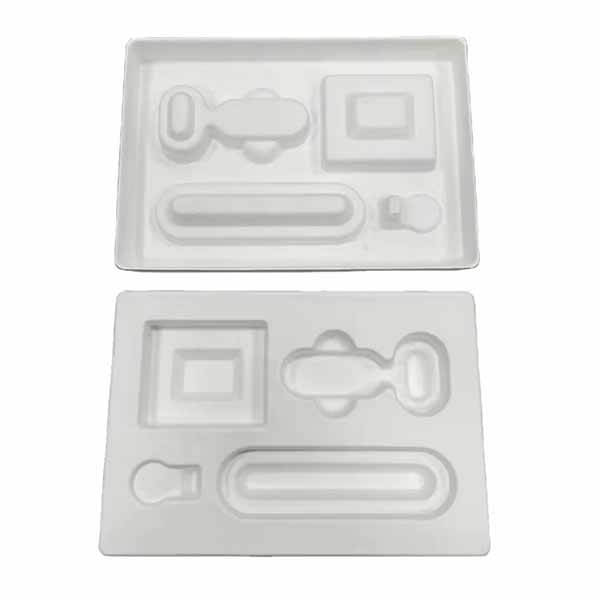
Bagasse Packaging for Electronic Products

Bagasse Packaging for Bottles
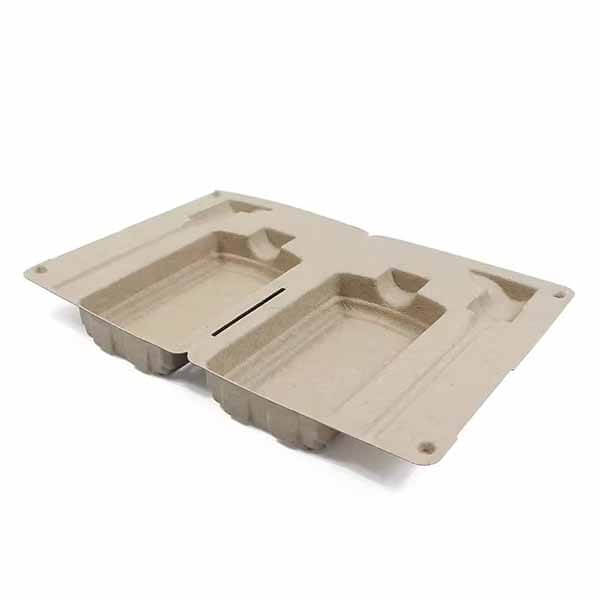
Bagasse Packaging for Shampoo
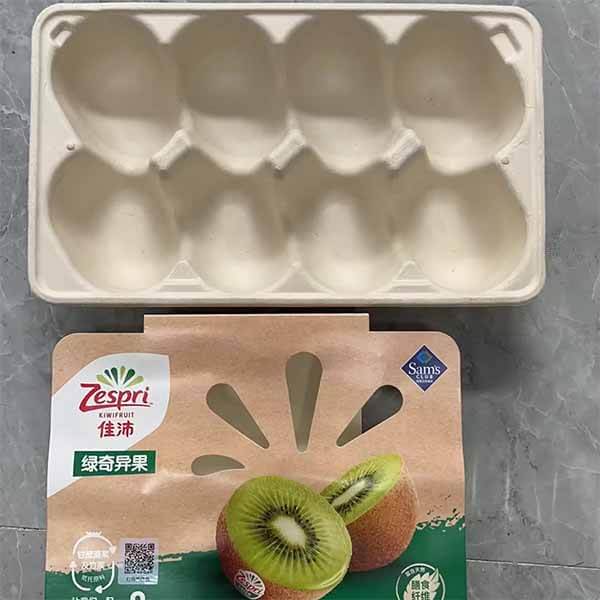
Bagasse Packaging for Fruit
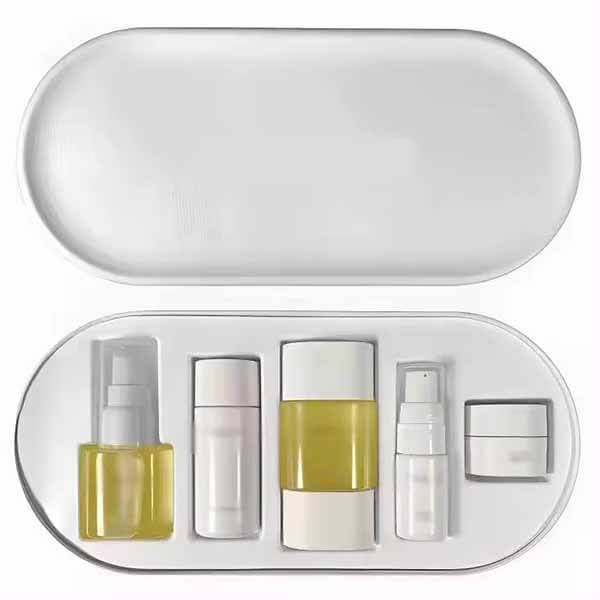
Bagasse Packaging for Cosmetic
Bagasse Packaging vs. Plastic and Paper Packaging
Let’s take a look at why bagasse packaging has become a substitute for plastic packaging and paper packaging, and in what aspects does this molded fiber packaging perform better?
Environmental Impact
Molded fiber is a sustainable plant-based material. Unlike plastic which is derived from fossil fuels and takes hundreds of years to decompose, using molded fiber packaging can greatly reduce the environmental impact.
Biodegradability
Both plant-based fiber material and paper material are biodegradable, they can break down naturally. But plastic will exist in the environment harm wildlife and cause ecological pollution.
Resource Renewability
Sugarcane, the source of bagasse, is a rapidly renewable resource, other plant-based fibers have similar features. They have a shorter growth cycle than trees used for paper production. This makes sugarcane fiber packaging a more sustainable option in terms of resource consumption.
Carbon Footprint
The production of molded fiber packaging generally emits fewer greenhouse gases compared to plastic and paper production.
Performance and Applications
Due to the great feature of bagasse packaging, this material can not only be customized to be a food container but also to be various types and functions of packing material for cushioning and shock absorption.
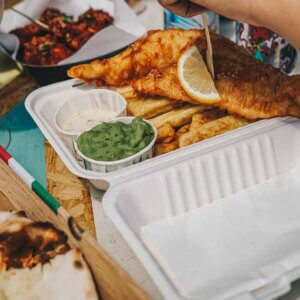
John Q
John Q is Eco March’s Product Manager. With 5 years of prior experience in the food industry after graduating from university, he has been an integral part of Eco March. He excels in creating and developing eco-friendly food packaging products with a keen focus on enhancing the consumer experience.


